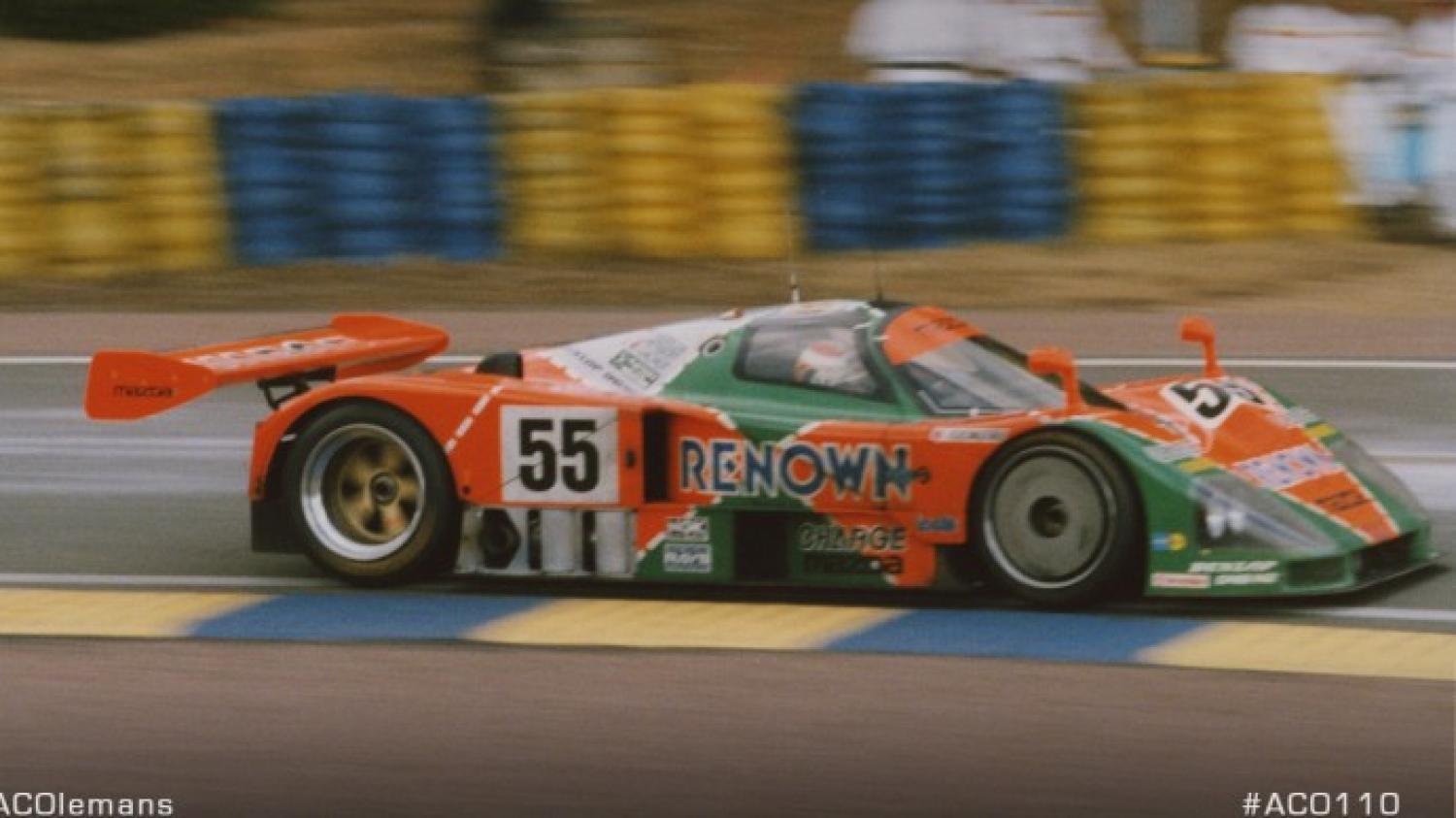Mazda was the first Japanese manufacturer to enter Le Mans in 1983, in the Group C Junior (subsequently C2) class. Toyota followed suit in 1985, and then Nissan a year later. Let’s take a look back at the three Japanese constructors’ milestones on the Group C timeline.
1983-84 – On its début appearance in 1983, the Mazda 717 C driven by Terada/Yorino/Katayama was the first prototype to cross the finish line in the Group C Junior class, in 12th place overall. The sister car with Soper/Weaver/Allam sharing the wheel also completed the race in 18th place. The following year, two 727 Cs finished 15th and 20th.
1985 – Once again, two Mazdas saw the chequered flag with the 737 Cs finishing in 19th and 24th places. Meanwhile, Toyota entered the premier C1 prototype class with two 85Cs. Only the one driven by Japanese trio Hoshino/Sekiya/Nakajima completed the 24 Hours (12th).
1986 – This year, it was Nissan’s turn to enter the Group C1 class, with R85 V prototypes. The one driven by Wada/Weaver/Hasemi came home in 16th place.
1987 – Mazda became the first Japanese manufacturer to make the top 10 at the 24 Hours of Le Mans when the 757 of Mark Galvin, Pierre Dieudonné and David Kennedy ran seventh. The car was entered in the IMSA class (named after the eighties’ American endurance series).
1988 – Although Jaguar and Porsche were in a league of their own, taking the top eleven spots, Toyota, Nissan and Mazda all made the finish.
1989 – While Nissan and Toyota were forced to retire, all three Mazdas completed the race in seventh, ninth and twelfth places.
1990 – Thanks to British driver Mark Blundell, Nissan became the first Japanese manufacturer to take pole position at Le Mans (3:27.02, at an average speed of 236.499 kph). This was the year when two chicanes were introduced on the Mulsanne Straight. The retirement of Blundell and his teammates, Julian Bailey and Gianfranco Brancatelli, did not stop Nissan from breaking into the top five of the final standings, with the fifth place earned by trio Suzuki/Hasemi/Hoshino. They were followed by the Toyota 90 CV of Ogawa/Lees/Sekiya. The only Mazda to be classified out of the three that started was 20th.
1991 – Mazda made history as the first – and still the only – Japanese manufacturer to win the 24 Hours of Le Mans, with Bertrand Gachot, Johnny Herbert and Volker Weidler. They moved to the front of the field at 13:08 on the Sunday following the retirement of the Sauber-Mercedes of Jean Louis Schlesser/Jochen Mass/Alain Ferté that had led for 16 hours. The news had such an impact in Japan that the TV channels interrupted their schedules to broadcast the last two hours of the race live! With Nissan and Toyota choosing to overlook the race that year, all the talk was of Mazda’s success. The other two cars also made the top ten in sixth and eighth positions, marking a major achievement for the manufacturer’s favoured Wankel rotary engine technology in its final outing at Le Mans before it was outlawed.
Photo: The Mazda 787B, the winning car from Japan in 1991.

